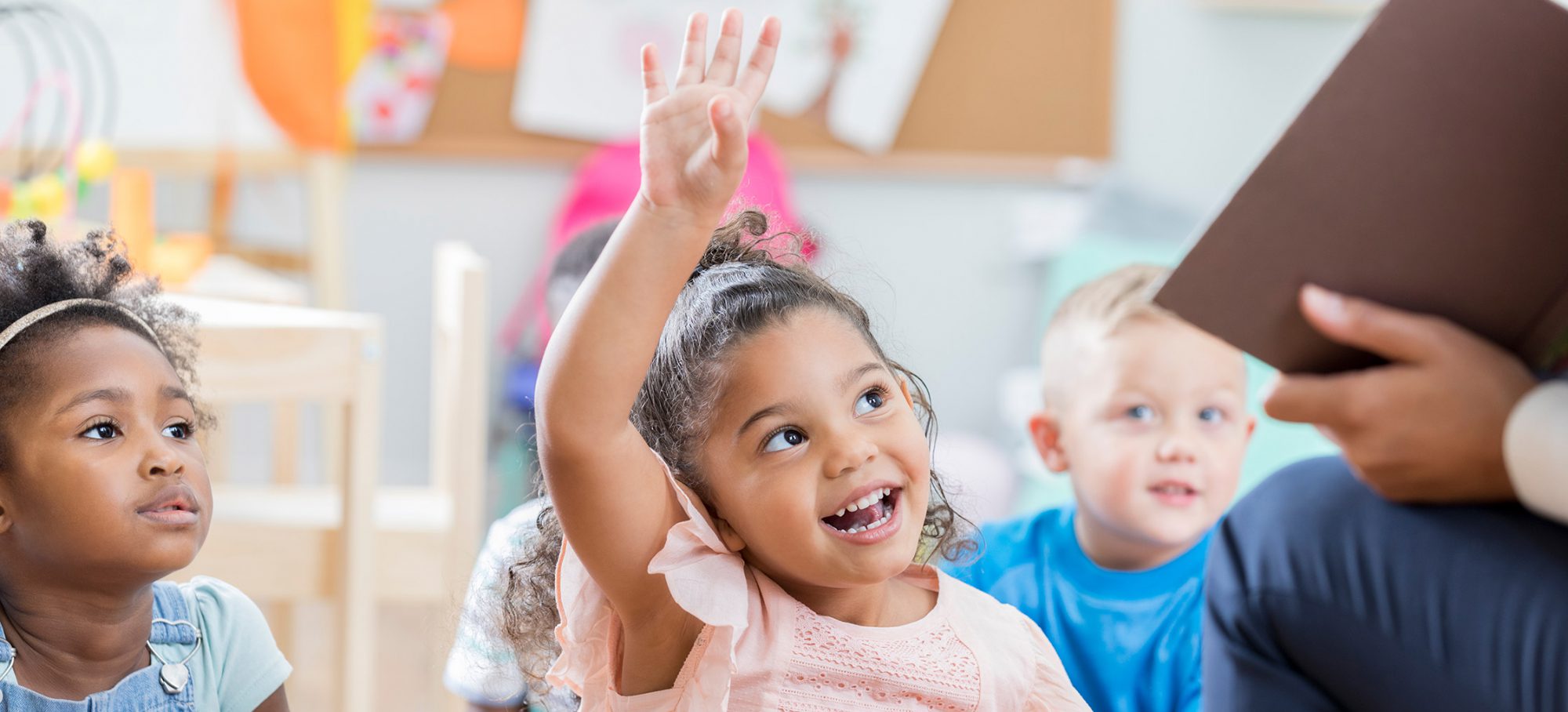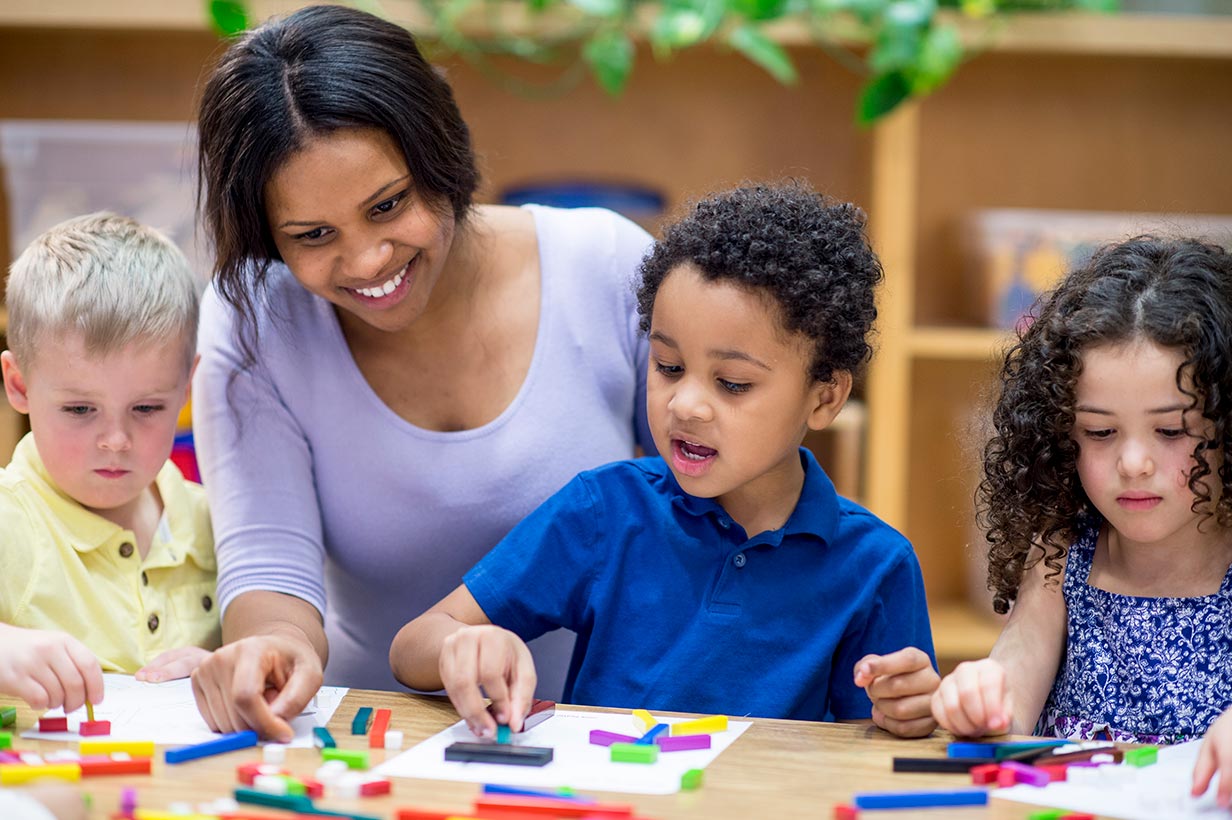Preschool sets the stage for kindergarten and the years beyond. During this time, as preschoolers are first introduced to the school system, the attention they receive will significantly affect the attention they give. This will not only impact their transition from grade to grade but will also influence their futures. So how do you know if your child is receiving the attention they need at their preschool?
Questions to ask when assessing your preschool’s level of child-focused attention:
- Is the school child-centered?
- How much recess time is allotted?
- Are children allowed the freedom to express themselves in the classroom?
- What style of discipline and attention is your child receiving?
- Does the school provide onsite counseling services?
Children: The Center of the Room
All key decisions should be made with the preschoolers at the center. But what does that look like? In contrast to a lot of traditional preschools, child-centered schools focus their planning on the children’s interests. This may involve play-based activities, emphasis placed on developing social, emotional, and cognitive skills, and teachers acting as facilitators of learning as opposed to dictators of lessons. A former teacher, Jessica Smock, comments on preschool education, saying, “we can’t rush our kids’ brains to learn more, learn faster or learn in the style of miniaturized grown-ups.” This is not to degrade more traditional school systems, as every child is different and, for that reason, learns differently. Laura Lewis Brown makes the point that any quality preschool, whether it is considered child-centered or more traditional, can prepare a preschooler for kindergarten. The quality comes from a teaching system that evokes intellectual curiosity in whatever setting works best for your child.
Recess: Room to Run and Play
Recess has more of an effect on a child’s development than people realize, which is why it is essential for a preschool to offer ample playtime amidst their students’ studies. According to research done by George Washington University in 2007, 20% of schools had reduced recess time, likely due, in part, to U.S. educational policy. According to this report, 62% of school districts had increased time spent on core subjects, like English and math. At the same time, 44% of districts decreased time allocated for lunch, science, art, music, social studies, physical education, and, of course, recess. With this decline in recess, the American Academy of Pediatrics argued that it is actually “a crucial and necessary component of a child’s development and, as such, it should not be withheld for punitive or academic reasons.” Several benefits come from some breaks away from the classroom, all of which play a huge role in a preschooler’s major developmental period.
What are the benefits of recess?
- Academic and Cognitive
- Social and Emotional
- Physical
Academic and Cognitive Benefits
Studies have shown that recall and learning are improved when the material isn’t presented all at once. When children are given a break from their academic activities, they are more attentive and productive upon their return to the classroom. There is a scientific reason for this. No matter your age, for your brain to function optimally, it needs time to recycle the chemicals required for long-term memory to form. Two experimental studies found that
- When children’s recess is delayed, they become inattentive.
- When they are given recess time, they are less fidgety and more likely to stay on task.
Social and Emotional Benefits
During recess, preschoolers are given a daily social outlet. They are free to run and create freely, playing made up games and socializing with their peers on their own accord. This is pivotal for preschool-age children as they develop communication skills, like negotiation, cooperation, sharing, and problem-solving, along with coping skills, including perseverance and self-control. Not only does is allow them a space to source their creativity, but it also provides a means to manage stress as they adapt and adjust to a new and complex education environment. Peter Grey, a psychologist, hypothesizing that generational increases in conditions like depression and anxiety can be primarily attributed to “the decline, over that same period, in opportunities for free play and the increased time and weight given to schooling.”
Physical Benefits
It is recommended that children get 60 minutes of physical activity every day. Recess is a time for preschoolers to get that time in. Even if all students don’t participate as fully in the active part of recess, this is still a chance of out the classroom to counterbalance sedentary time and provide valuable practice of motor skills and movement. Nearly 200 different studies have suggested that physical activity supports learning. Additionally, plenty of research has shown a positive relationship between regular exercise and cognitive ability, especially memory and thinking skills.
Positivity: Room for Possibility
Gone are the days of time outs. Dr. Jane Nelson crafted the concept of positive discipline that can be used by parents and teachers alike. This kind of discipline takes the focus off of punishment and moves it towards teaching. What does this look like in practice?
Don’t point fingers.
Instead of just pointing out the wrong, demonstrate how the preschooler can set things right.
Show kindness with firmness.
Stay calm. Display empathy and respect while still being firm in your belief that what the child did was the wrong thing to do.
Give choices.
When possible, give the preschooler choices to fix their mistake. For example, offer them the option to apologize or sit to calm down first. This empowers them and teaches them how to make good choices for themselves.
These are just some of the practices to look for in your preschool teachers. Another thing to look for is what kind of attention your child is receiving. Is it positive? Preschool teachers should be warm and nurturing, embodying positive attention. That doesn’t just mean giving a thumbs up and saying ‘good job!’ This involves
- Showing interest in the preschooler’s interests and engaging with them
- Providing specific feedback that encourages good behavior
- Making eye contact and smiling
Room to Express
Preschool is less about learning the ABCs and more about learning to express yourself. At this age, children are learning to be their own person and express their ideas and feelings. The classroom should be a place where they are free to do this. Teachers should be flexible, allowing time for students to test their ideas, not only at recess but during class time as well. The classroom should be a place for them to harbor their creativity and vivid imagination. Preschoolers should feel like they are being heard when they express their ideas, no matter how crazy they are, and trust me, they will be crazy.
Onsite Counseling: More Room to Express
There are many different issues, even at a young age, that children can be exposed to. Whether they are experiencing family problems at home or social pressure at school, they may not yet be able to understand what they feel if they have not quite fully developed that skill. This, then, may cause them to act out. A counselor is the best person to help them express what they are feeling, find the source of the issue, and help them respond and cope in the best way.
Preschool is one of the most influential times in your child’s life. As they will spend the majority of their time at school from now on, make sure your child is receiving the best education they can be, not just based on their pre-K curriculum. Sure, math and vocabulary are important for them to learn, but they also need to learn to love learning. The kind of time and attention they are given is one of the main contributors to reaching that goal.

